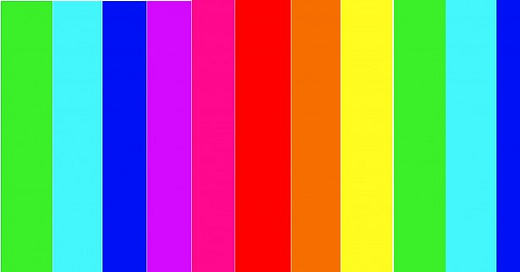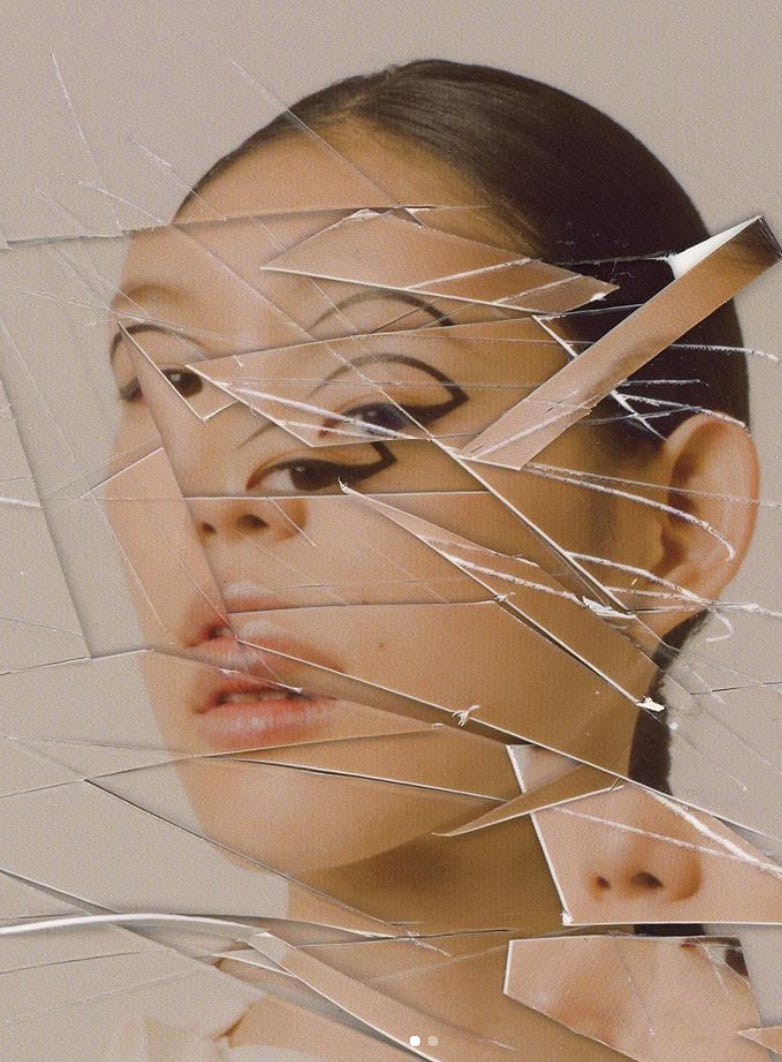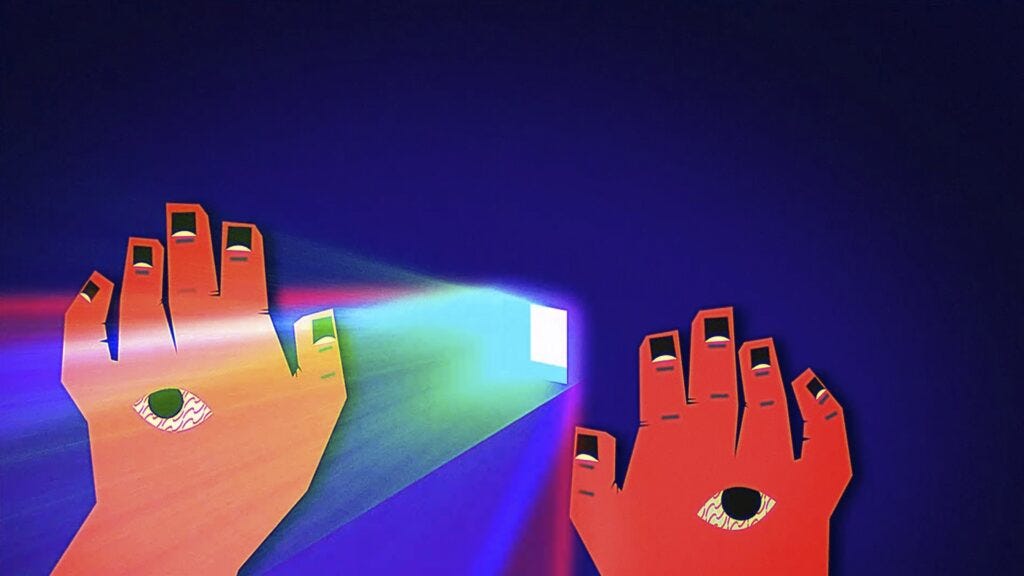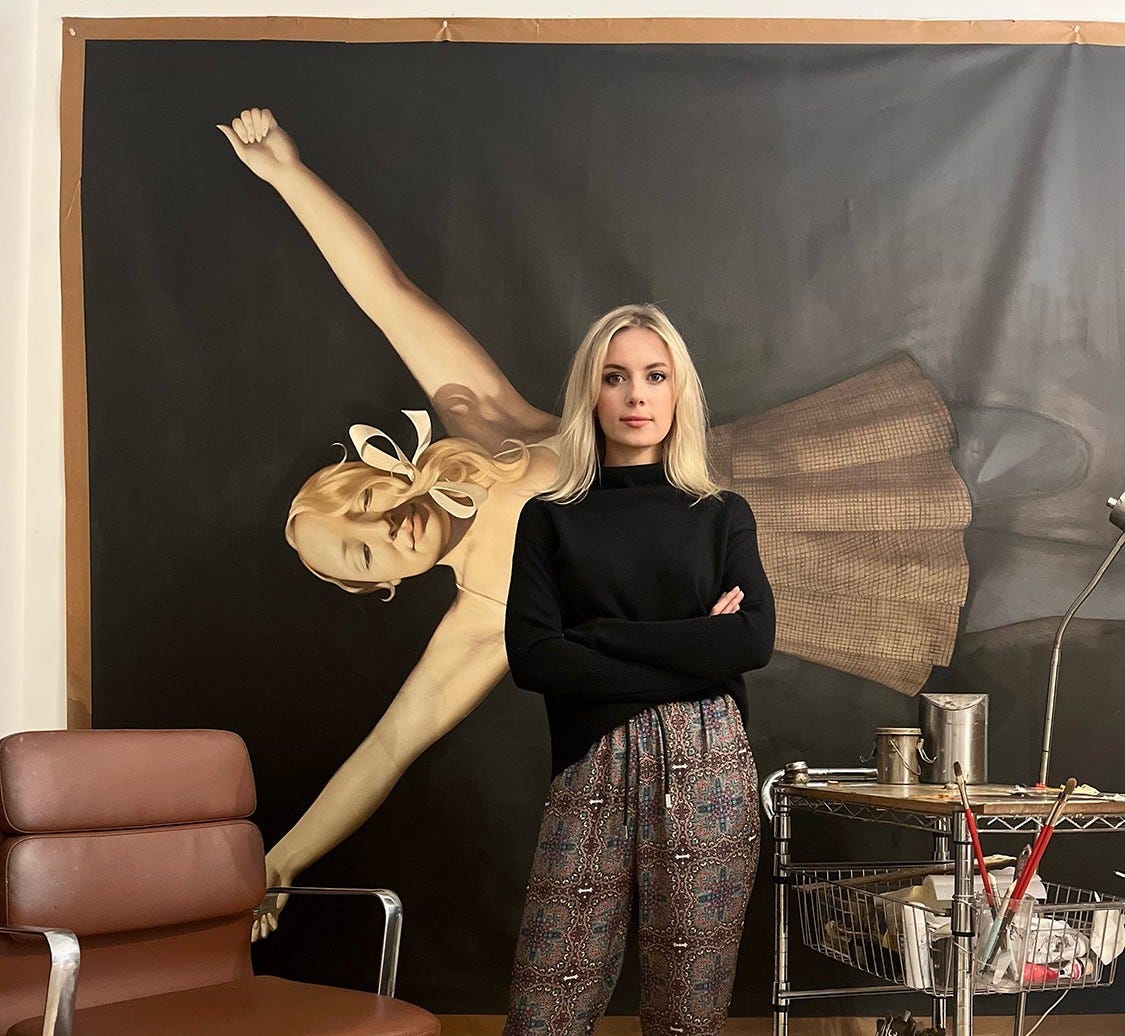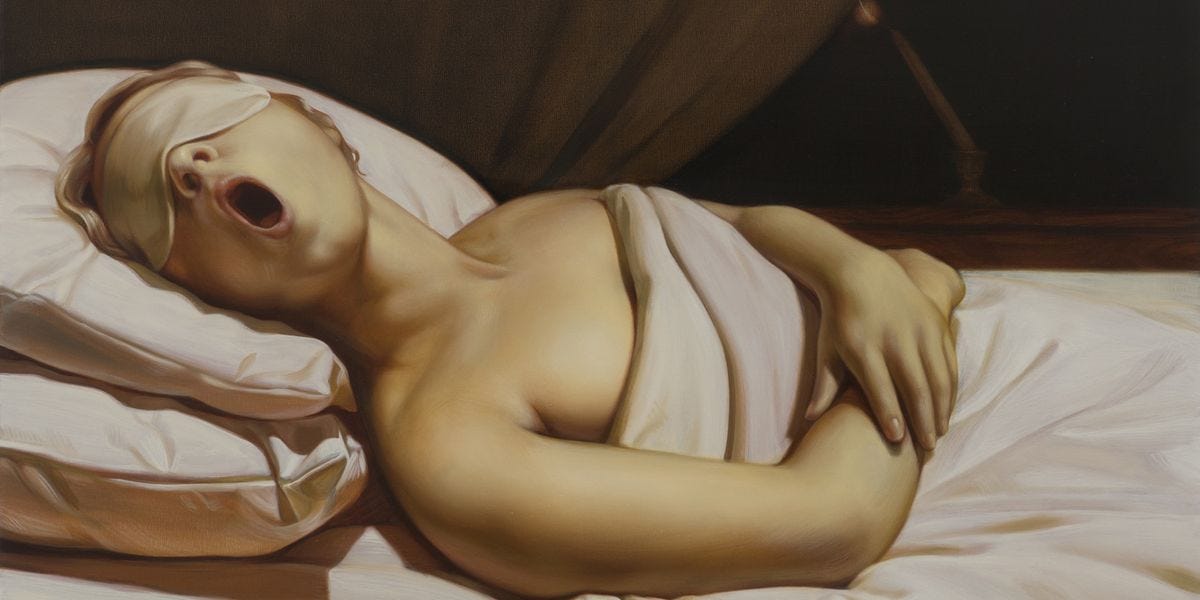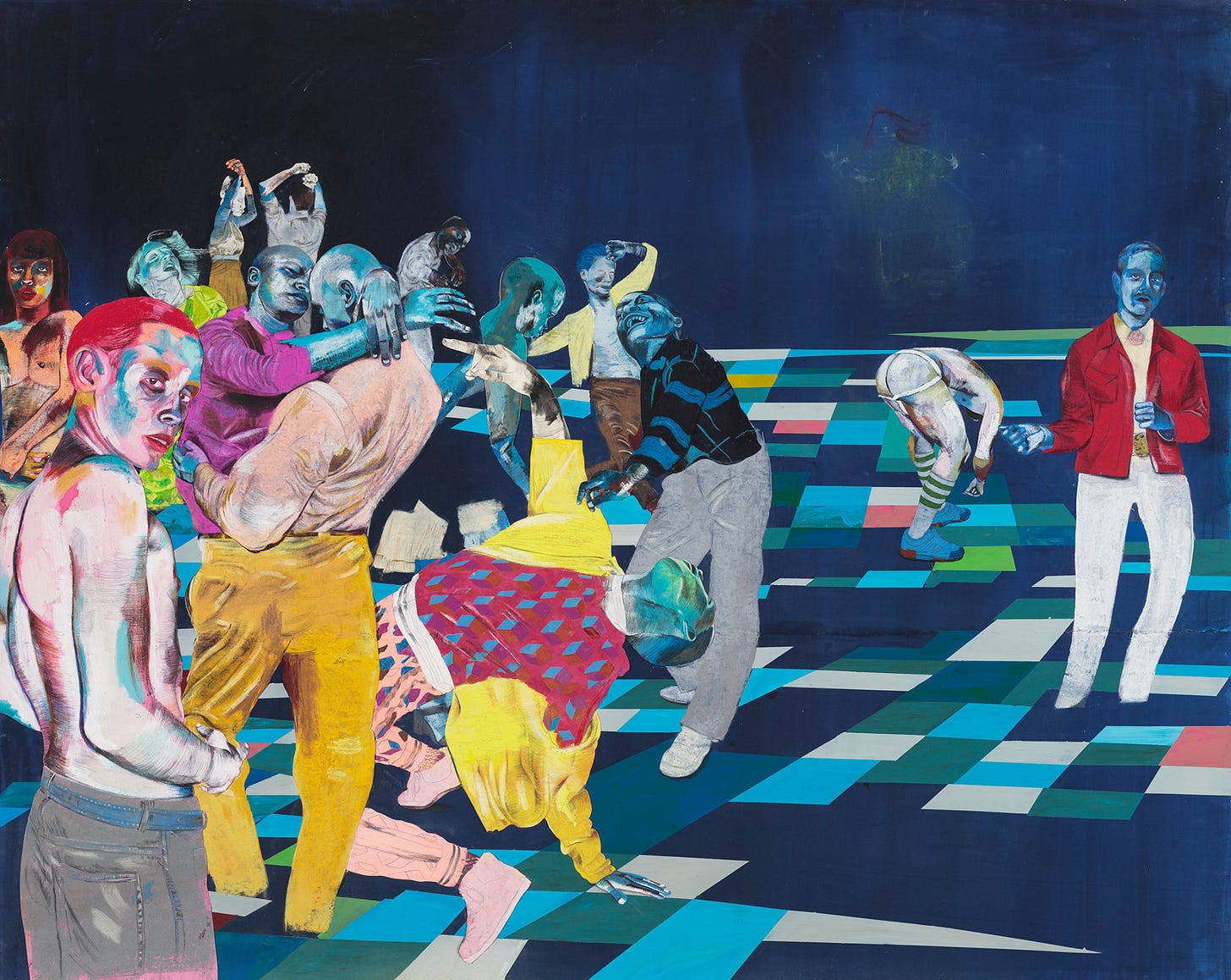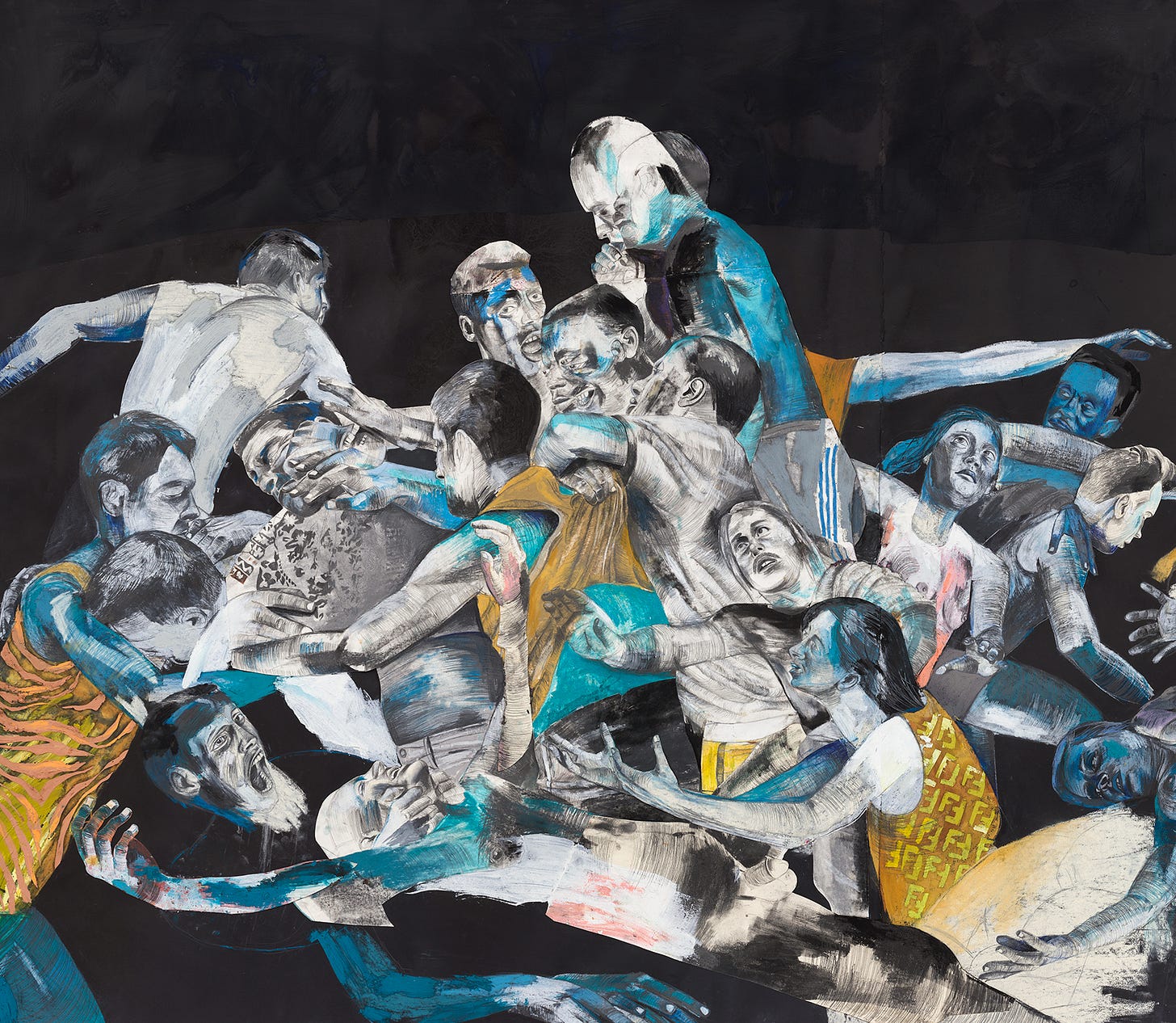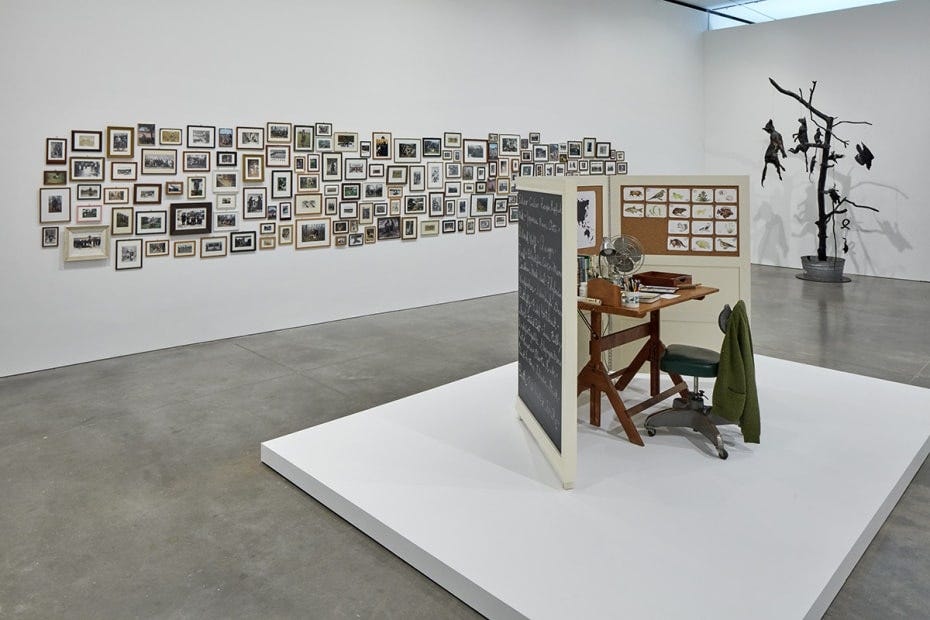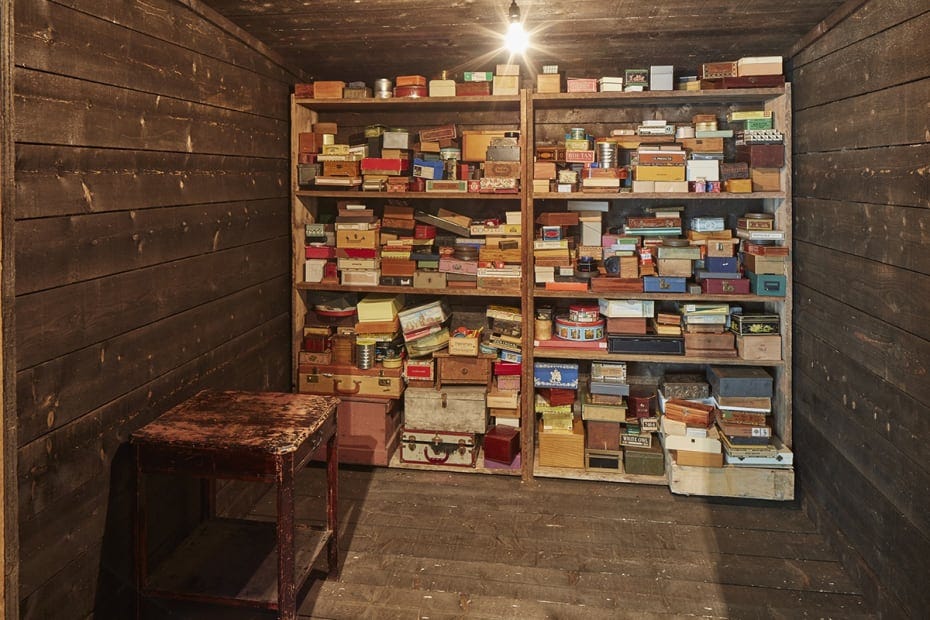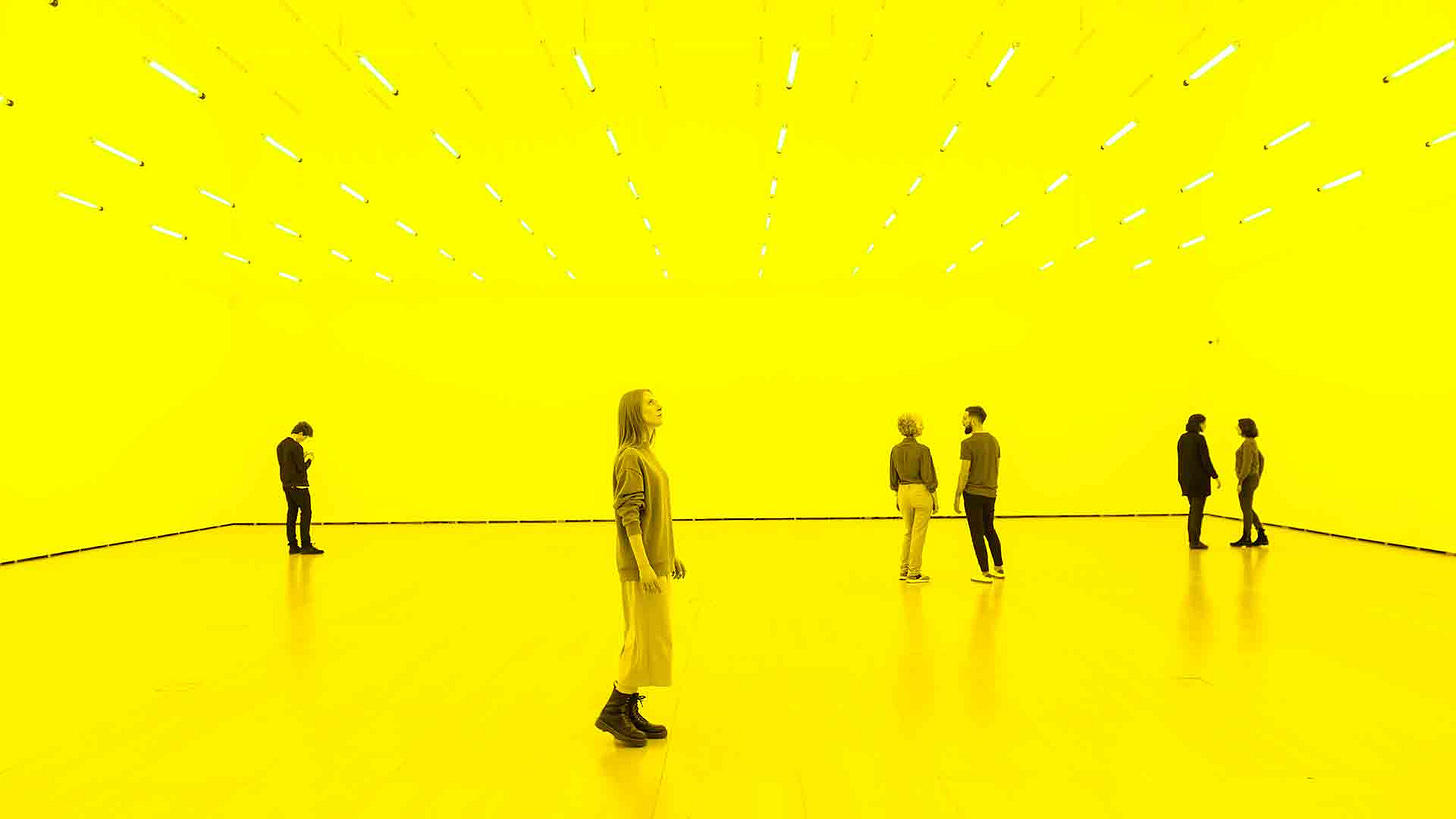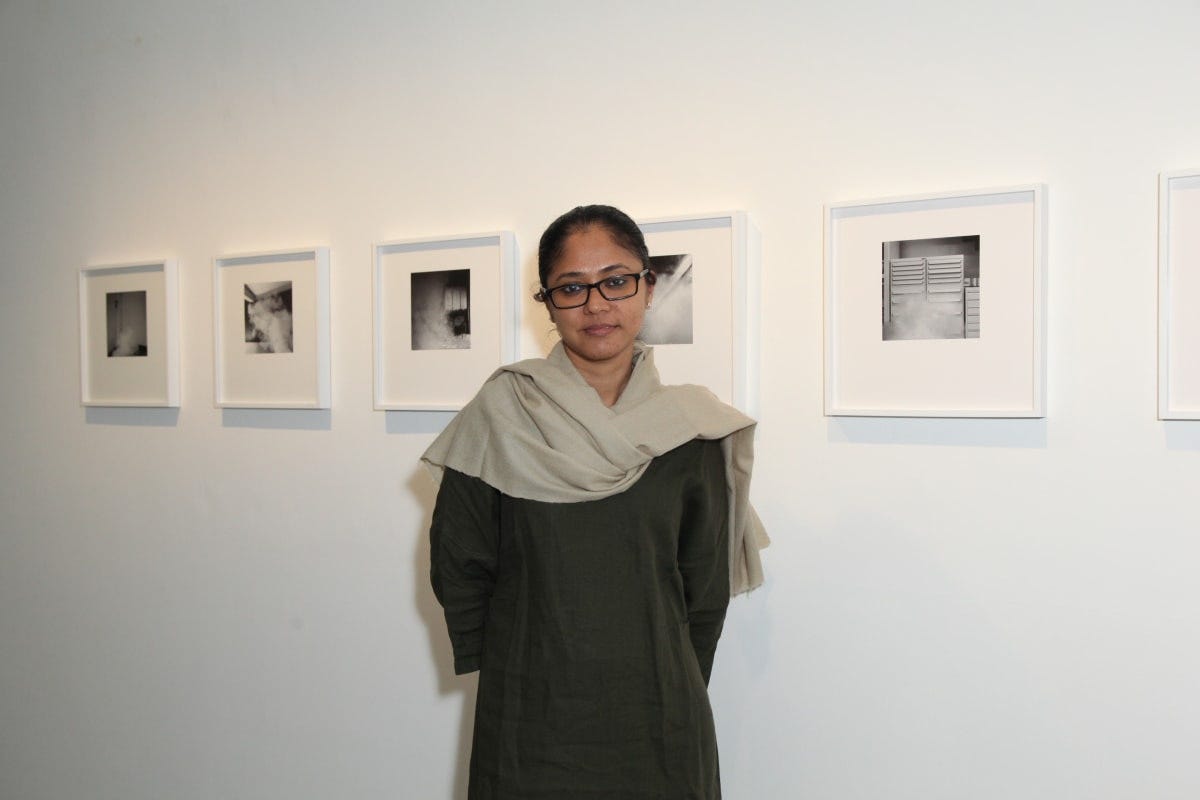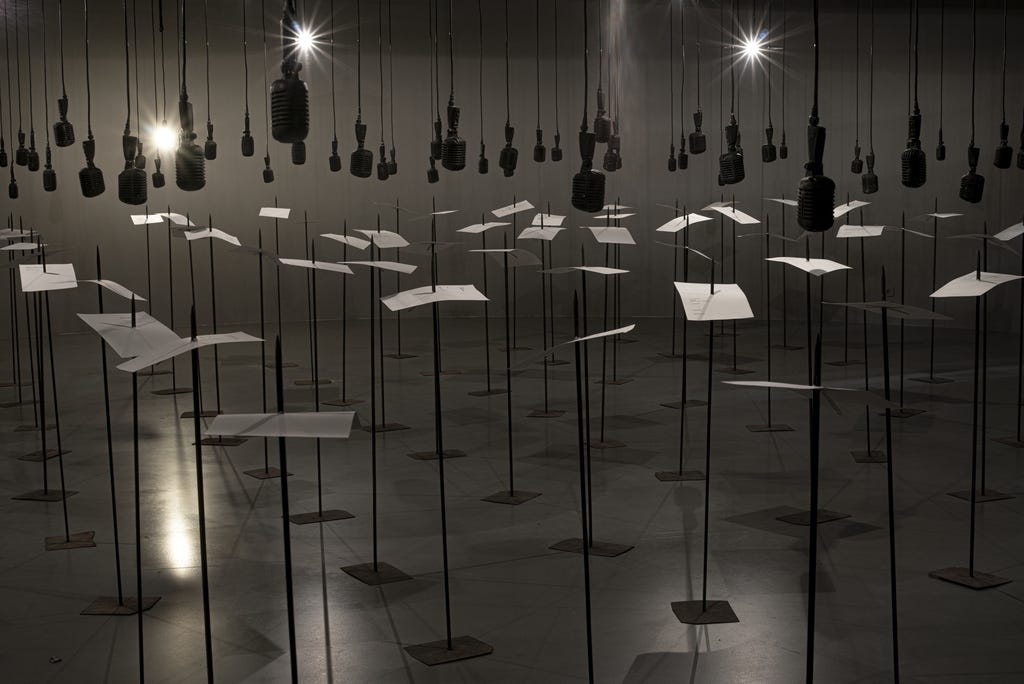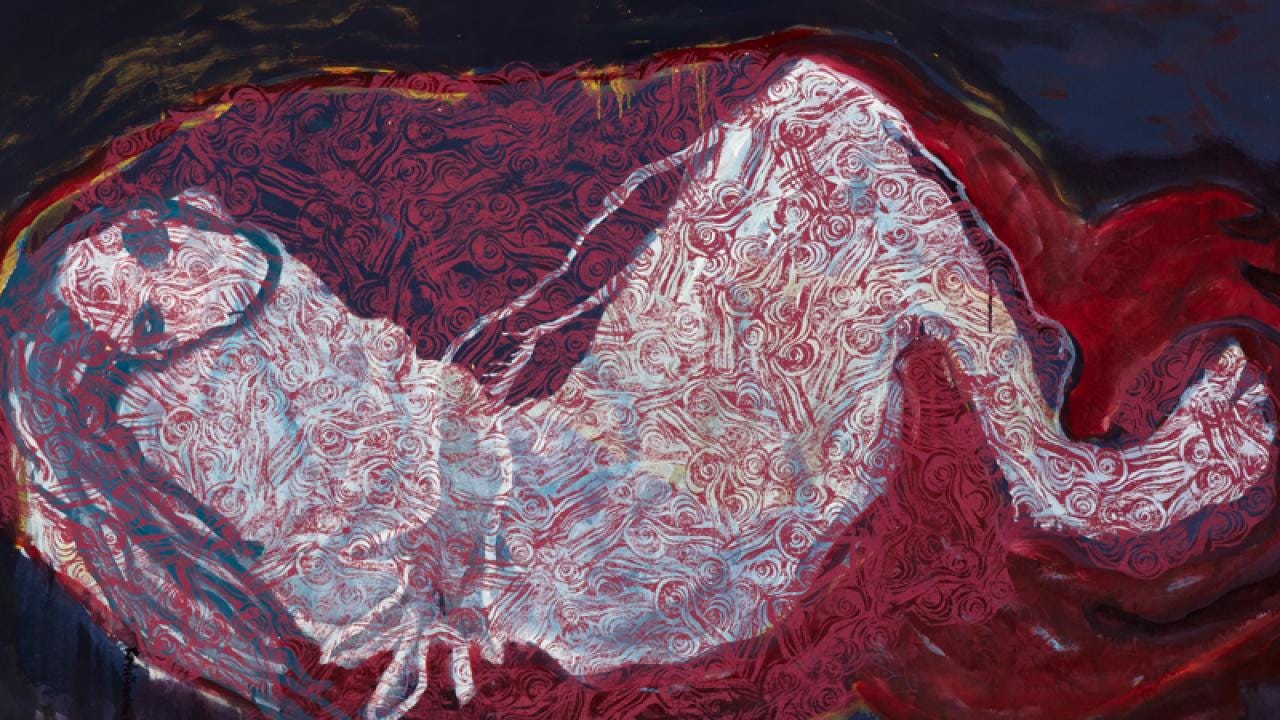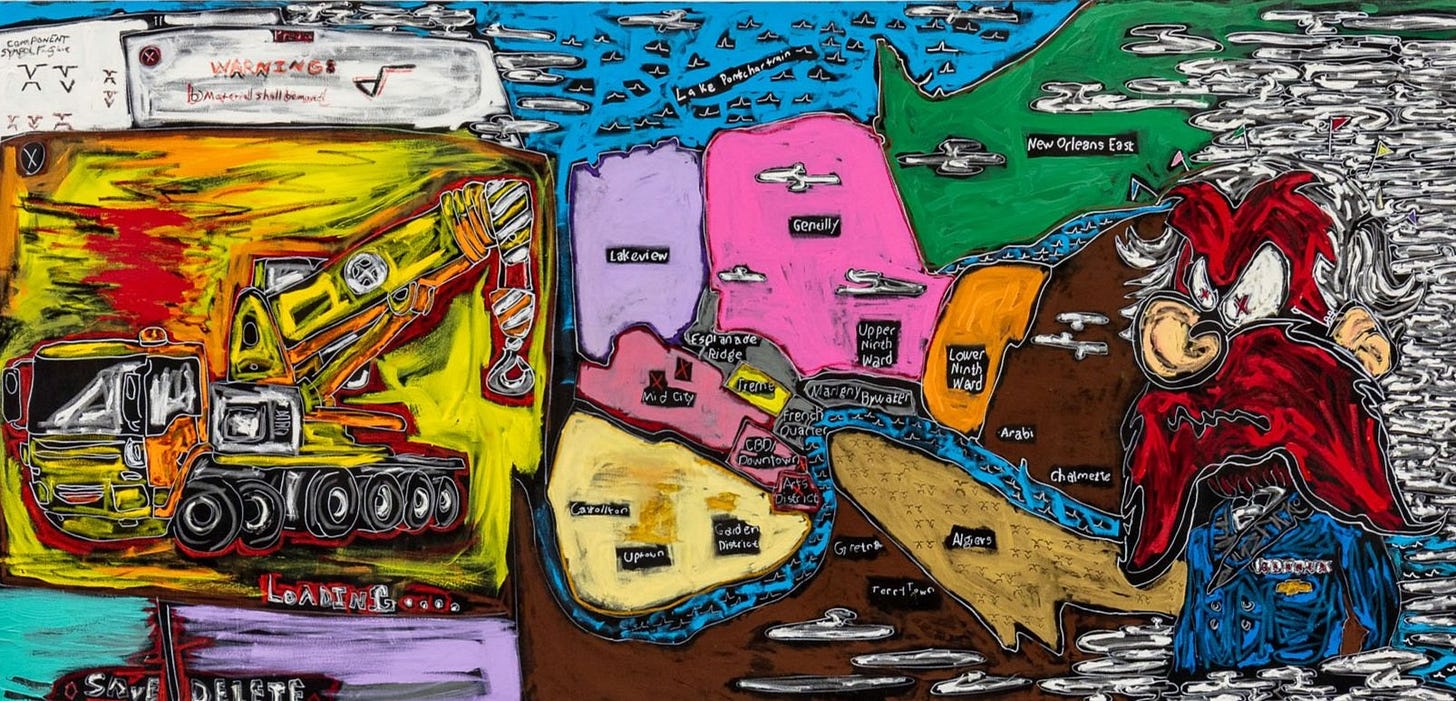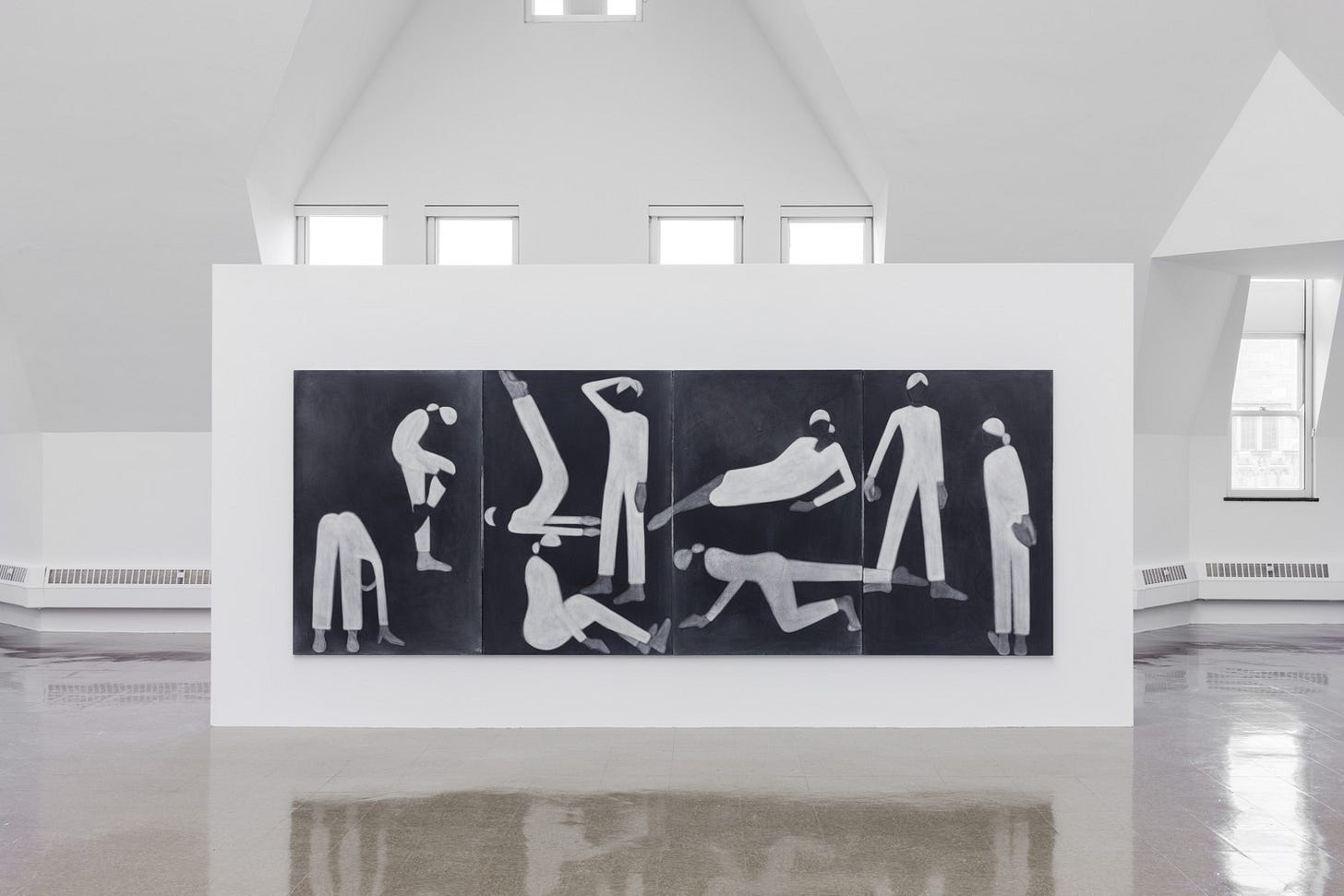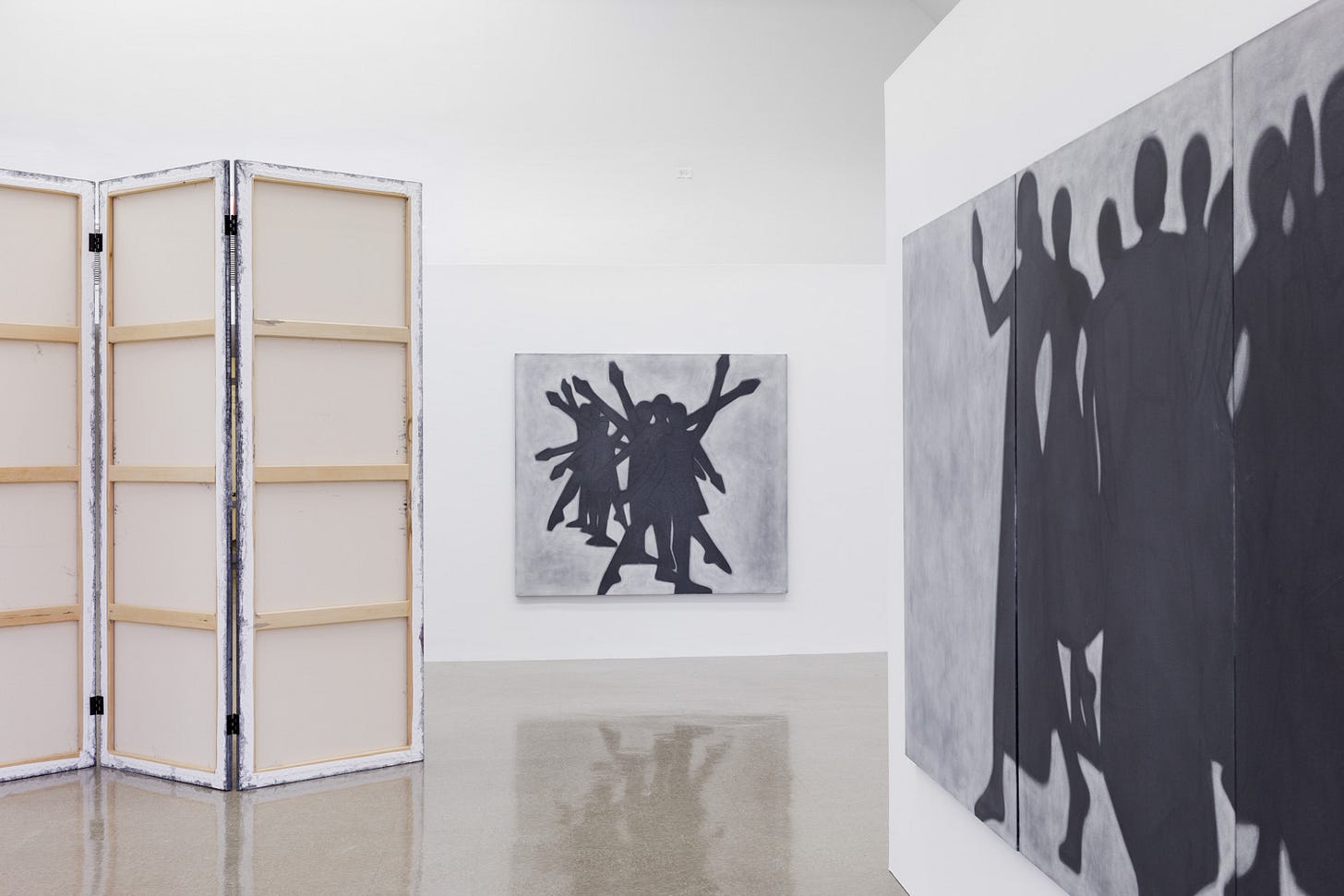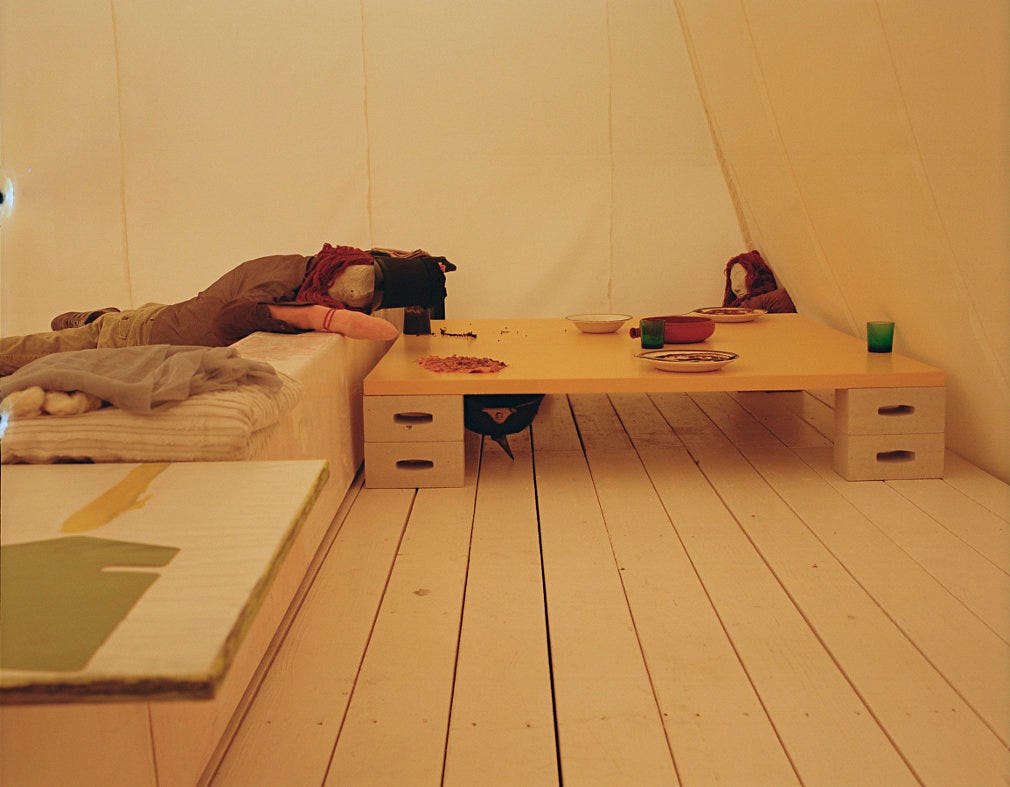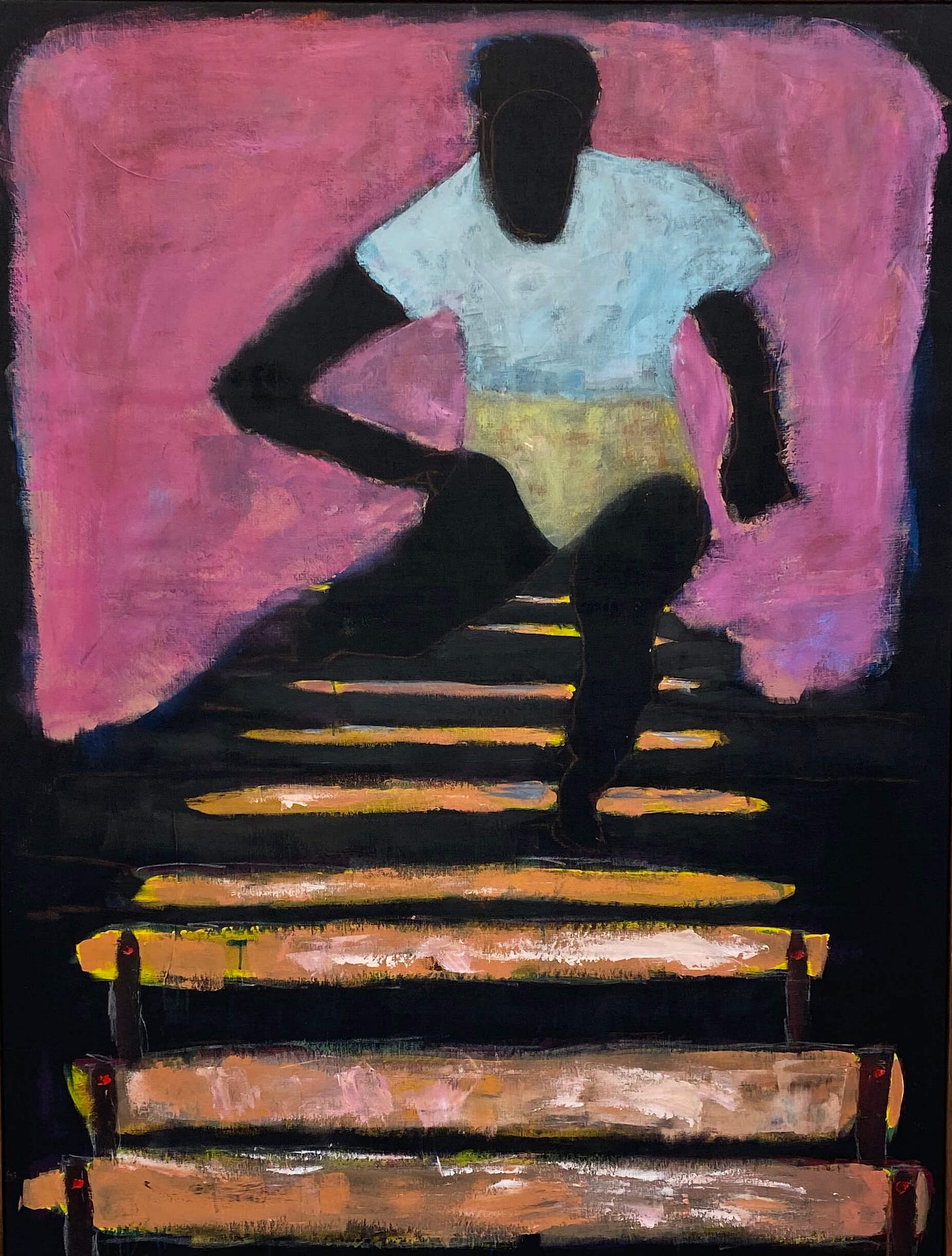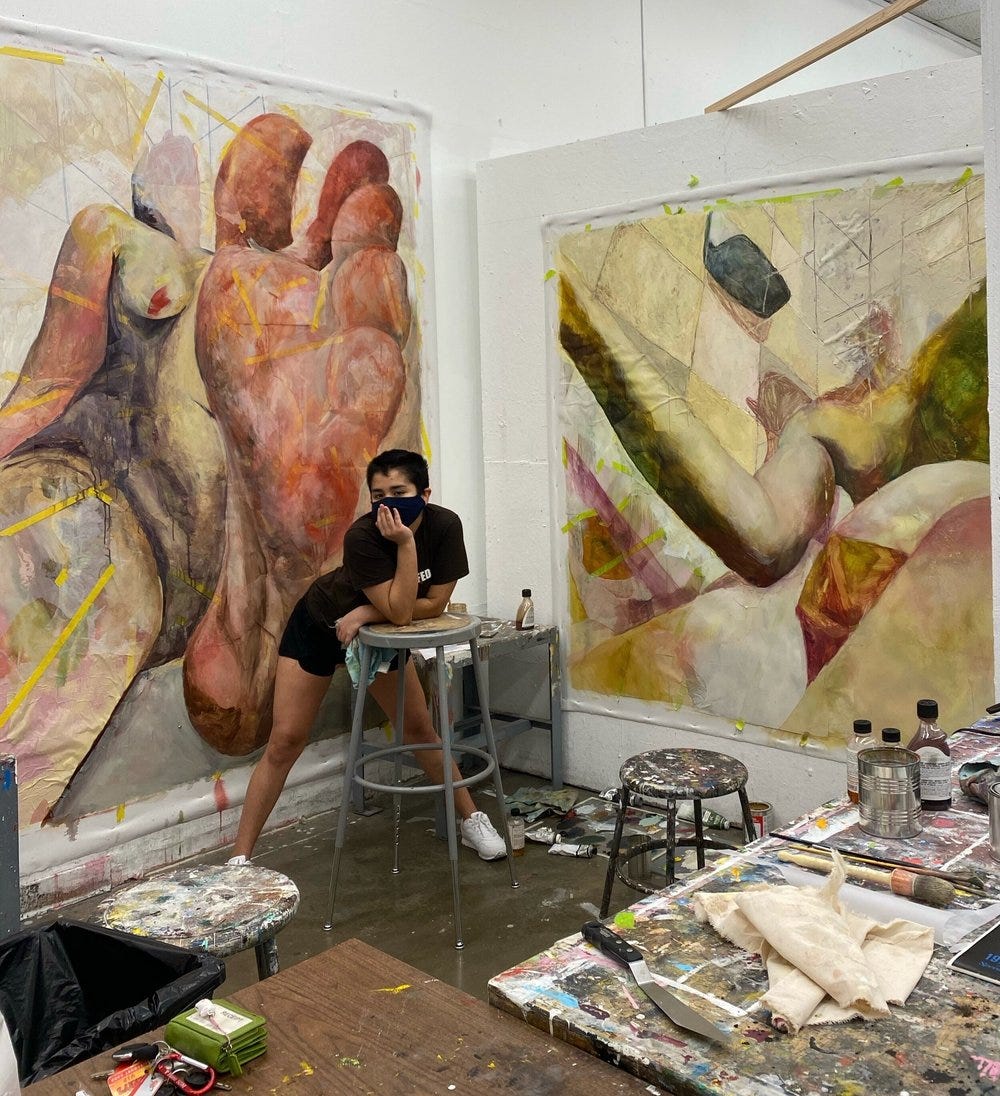Welcome to (Month 12: Volume 1), the new exclusive collection for paid subscribers! Thank you again for supporting this project, I really appreciate it!
(Month 12: Volume 1) contains tons of contemporary art, music, fashion, videos, and more stuff that resists categorization!
Don’t forget this newsletter will exceed most email limits, so you’ll need to click through to “view entire message” at the bottom of this email or click over to the website to enjoy the whole thing.
And remember, every entry comes with a link so you can explore more and more.
Now then, without further ado…
On a cold day deep in the pandemic I took the Q train from Brooklyn to see the Agnes Martin painting Friendship (1963) at the Museum of Modern Art. Friendship is a six-by-six-foot square, gold leaf grid. The surface shimmers and jumps. I think of mosque ceilings, of God’s geometry. I sense something vast inside the painting, an energy with no beginning or end. Martin used an ancient technique called sgraffito, scratching into the barely dry gold paint to expose the red paint underneath. The grid is mathematical, but also human in its slight off-ness, its many small imperfections. Before it, I feel small but not diminished. A smallness that I sometimes feel inside a great snowstorm, a smallness that places me back into the grid of the world’s infinite living things.
— “Please Pretend That I am Dead.” Darcey Steinke on the Long, Complicated Life of Painter Agnes Martin” by Darcey Steinke, via Lit Hub
Mixed media photography and collage artwork by London based artist Rosanna Jones
Christian Dior | Cruise 2023 by Maria Grazia Chiuri | Full Fashion Show
Gregory Rick “was born in 1981 and grew up in South Minneapolis, Minnesota. He received his BFA from California College of the Arts in 2019 and graduated from Stanford University with an MFA in Art Practice in 2022.”
This year marks the centenary of modernism’s annus mirabilis. For many, that means T. S. Eliot’s The Waste Land and James Joyce’s Ulysses—both first published in book form in 1922—perhaps along with the first English language translation of Ludwig Wittgenstein’s Tractatus Logico-Philosophicus. These books are in different genres and disciplines—poetry, fiction, philosophy—but all of them wed experimental literary aesthetics with highly abstract intellectual projects. All invoke myths to represent immense aesthetic and intellectual challenges: each tells of an arduous journey, that could, if successful, be redemptive, even transformative. Each text has its hero, but in each case the hero is also—or really—you. You, the reader, are challenged to find your way through these depths and heights and broad, rough seas. The journey is perilous, filled with traps as well as marvels. Should you succeed, your home may look different by the end; you will be changed too.
— “A Century of Serious Difficulty: Reflecting on three monumental works of modernism—James Joyce’s Ulysses, T. S. Eliot’s The Waste Land, and Ludwig Wittgenstein’s Tractatus Logico-Philosophicus—a hundred years on.” by Johanna Winant, via Boston Review
Wong Ping “was born in Hong Kong in 1984 and obtained his BA from Curtin University, Perth, Australia, in 2005.”
All the bees in California are dead. Their little bodies flung out like confetti on every sidewalk. I walk through Newport, and they’re everywhere, crushed against the powder of the grout. I imagine insect snipers in every window, firing salt into their striped flesh, turning the bees to stones. Sodium bullets. I imagine bee-sized daggers in their bee-sized hearts.
— “ALL THE BEES IN CALIFORNIA ARE DEAD” by Piper Gourley, via X-R-A-Y
Anna Weyant “is a Canadian New York City–based artist whose figurative paintings blend influence from the Dutch Golden Age with an awareness of contemporary popular culture and social media.”
paper bits from an anonymous torn up threat letter on pink paper? (pink & scented)
— "READ THIS ALOUD WITH THIS IN YOUR MOUTH" by Mette Moestrup — translated by K a t r i n e Ø g a a r d J e n s e n, via Mercury Firs
“Living and working in Paris,” Eric Baudart “pursues a practice that evolves from Marcel Duchamp's readymades, while simultaneously devolving from it.”
Because I want the film to be directed against the day. Because the light has to be won, it isn’t what makes us see, it comes from far away, from behind, it is seen through the foliage of trees or a tangle of hair, it holds the opacity of bodies in suspension, it is above all a relation to the world, an originary dazzling that returns each night to light up our dreams.
— “Sombre: Notes of Intention” by Philippe Grandrieux, via Screening the Past
Wardell Milan “is an American visual artist residing in New York City. His work consists of drawing, painting, and photography, as well as constructing three-dimensional dioramas.”
Fabien Merelle “was born in Fontenay-sous-Bois, France in 1981 and currently lives and works in Paris. He creates delicate and highly detailed drawings in black ink and watercolour.”
“With her interest in materiality and interstitial spaces,” Nabuqi (娜布其) “is one of China's most intriguing installation artists.”
Nineteen fifty-nine was a pivotal year in jazz. In August, trumpeter Miles Davis released his landmark album Kind of Blue, which would go on to become the best-selling jazz record of all time thanks to its accessible blend of blues and modal voicings. But in November, partially self-taught alto saxophonist Ornette Coleman blew Davis’s mainstream style wide open during a two-week residency at New York’s Five Spot Cafe. Coleman and his quartet premiered an entirely different, avant-garde sound that was lauded by critics but deeply controversial among audiences. Disregarding conventional chord structures in favour of an anarchic, unpredictable and often atonal improvisation, he birthed a new concept: free jazz.
— “The baddest technician’: how Don Cherry is still making jazz new” by Ammar Kalia, via The Guardian
Samson Young “is a Hong-Kong artist, working primarily in the mediums of sound performance and installations.”
Mark Dion “is an American conceptual artist best known for his use of scientific presentations in his installations. His work examines the manner in which prevalent ideologies and institutions influence our understanding of history, knowledge and the natural world.”
A FEW YEARS AGO, I developed agoraphobia. I did not, could not, leave my apartment. After several months, I was finally able to take a walk around the block with the help of a friend. Weeks later I could wander Greenwood Cemetery on my own. Eventually, with the help of a beckoning black cat, I was able to enter a bodega and buy a cup of coffee. I was, during those sleepless nights, constantly watching detective dramas and taking anything I could find for insomnia, keeping books and valerian root next to my bed like talismans.
Sally, one of Katherine Dunn’s fictional stand-ins, has a similar quarantine, though for very different reasons.
—"Sad Girl Manifesto: The cult, carny world of Katherine Dunn" by Grace Byron, via The Baffler
Harmony Korine Collection on Late Show, 1995-99
Olafur Eliasson “is an Icelandic–Danish artist known for sculptured and large-scale installation art employing elemental materials such as light, water, and air temperature to enhance the viewer's experience.”
Shilpa Gupta is a contemporary Indian artist, who lives and works in Mumbai.
Portia Zvavahera “is a Zimbabwean painter.”
Sometimes I spend an hour in aesthetic re-education, trying to see blue in things.
In lockdown I am trying to see the colour of my kitchen. The colours I mean: to find an aesthetic position that can make me see things good. I mean, that can make me see the good in things. I’m trying not to design my life, but to see its design, the underlying tone and rhythm of its colours. I’m trying to take Instagram photos as though what I have were already ideal. I am trying not to make my life into a movie, but to see the movie in my life.
— “My Life as a Godard Movie (Extract)” by Joanna Walsh, via 3:AM
John Isiah Walton “was born in 1985 in New Orleans, where he currently lives and works as a fine artist.”
Silke Otto-Knapp “was a German artist. Her work was shown at numerous galleries and shows including the Bienal de São Paulo and the Liverpool Biennial. She died in October 2022 of ovarian cancer.”
George Rowlett - Self-Portrait (2022)
Kai Althoff “is a contemporary German artist, best known for figurative paintings rendered in a personal, idiosyncratic visual language.”
Reggie Burrows Hodges “(b. 1965, Compton, CA) is a painter whose works explore storytelling and visual metaphor.”
At our next engagement—at a MoMA cinema where, years before, I’d witnessed a fight break out between two old men during a particularly obscene moment in the director’s cut of Nymphomaniac—the novelist Blake Butler is determined to have Vladimir articulate his writing process. To understand (and have our four hundred-strong audience also understand) how the Sorokin-sausage is made.
“You’re asking me to let you into my writer’s kitchen, Blake… I’m afraid that won’t be possible…”
— “A Cinematic Country: Sixteen days in America with Vladimir Sorokin” by Max Lawton, via The Point
Sarah Gomez lives and works in Dallas TX
Samuel Andreyev interviews Brian Ferneyhough (2021)
I won’t tell you what happens next except to say that before the climax there are more wonderful exchanges about who is going to say the best last thing. Most of us who write can probably relate. There are also a lot of fascinating stylistic things going in this opening gambit, beginning with the way certain acoustical resonances anchor the first long paragraph.
— “Sam Lipsyte on the What and the How.” from the Craft of Writing newsletter
Lisa Williamson "A Landscape and a Hum" Tanya Bonakdar Gallery in NY (2022)
via New York Gallery Walk

